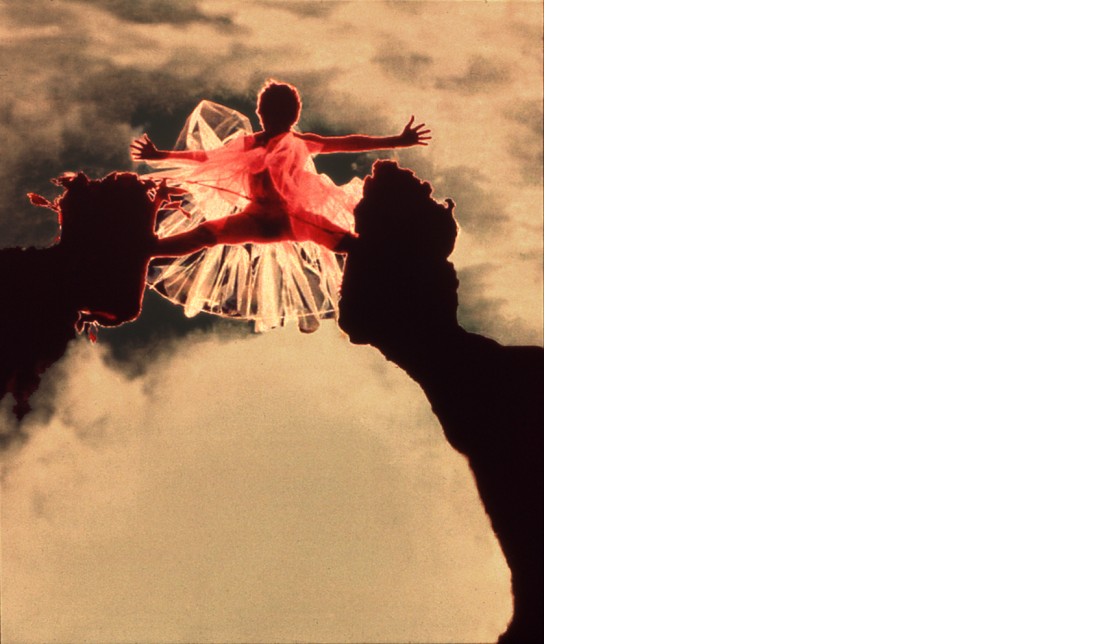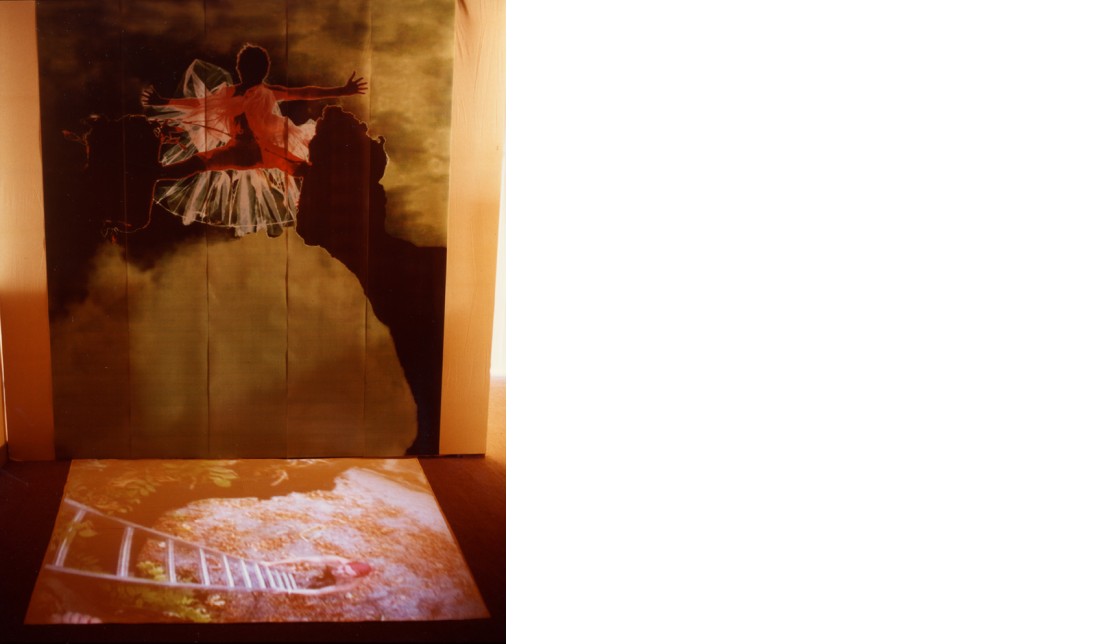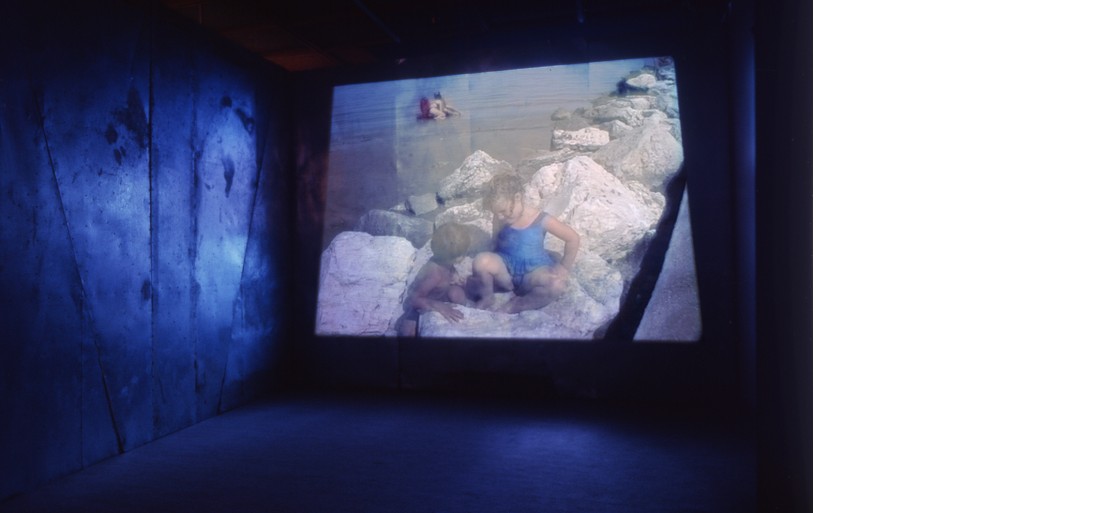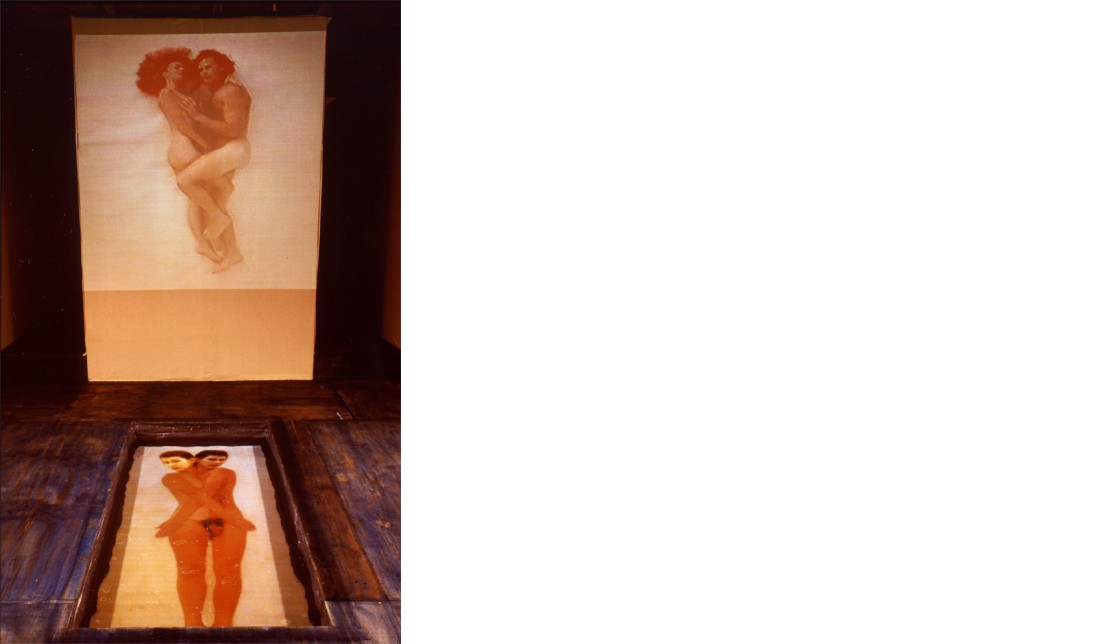'Viaggi’, Video and Sound Installation, Qld College of Art Gallery. 1993.
Detail of 'Flight'

'Viaggi’, Video and Sound Installation, Qld College of Art Gallery. 1993.
Detail of 'Flight'

‘Viaggi’, Qld College of Art Gallery, Video and Sound Installation, 1993.
Installation View of 'Flight' and 'Tree Cutting Sequence', projection onto floor, 18min loop.

‘ Viaggi’, Qld. College of Art Gallery, Video and Sound Installation, 1993.
Installation View: 'The Couple sequence,' 6min 20sec loop projected onto galvanised metal. Photograph Peter Liddy

‘ Viaggi’, Qld. College of Art Gallery, Video and Sound Installation, 1993.
Installation view, detail of Inner Chamber, Image in pool: ''Rosarium Philosophorum: Metamorphosis'
Video Still: 'Rosarium Philosophorum' 1min loop. Photograph Peter Liddy
‘Viaggi’ 1993.
I used the time at the Australia Council Besozzo studio in 1992 to explore new media and to produce the costumes and video the performances that were to become the basis of the video and sound installation, ‘Viaggi’. By and large the everyday events that occurred around the villa became the subject of my work and were eventually expanded into the performative projects. They grew out of routine activities – like the bonfire the 86 year old gardener tended periodically, or the annual tree pruning. I was the first video artist they had encountered. Thus ‘Viaggi’ came into being through a creative working with a cast of willing, real life players in a particular context.
I produced 16 videos (one was animated) and four computer facilitated images for 'Viaggi'. Within the installation I made use of durational variations within the multiple videos to create an ever evolving and changing visual, aural and psychic landscape. The gallery was divided into an inner and outer chamber with an intermediate ‘labyrinthine’ passage connecting them. I projected several of the videos onto various surfaces, including the floor, and a zinc alumina wall (a remnant of ‘Labyrinth’). The monitors were concealed in fabricated walls, several in a specially constructed false floor, another in a blacked out ceiling. They became like luscious moving light images and transformed the space. The aural landscape was rich and complex: children’s voices at play, the old clock tower creaking and chiming, the rasp of hand saws, the men calling to each other as they pruned the tree, the sound of running feet, falling branches, bees humming, birds calling.
In ‘Viaggi’ we encounter a figure in an endless and apparently futile attempt to fly – or was it futile? We follow the crinoline figure through a series of scenes as she struggles to free herself of the accrued layers of costume and its ‘foundational’ cage and achieve her intention. She eventually climbs the pruned tree with the assistance of the old gardener and eventually – after jettisoning the costume – disappears in a symbolic leap – we assume into the flight so painfully and comically unachieved in the earlier attempts.
In the inner chamber of the installation we find invocations of androgyny. I utilised a computer to interpret and animate the Rosarium Philosophorum. This represents the coming together of the masculine and feminine elements in the alchemical union that produces the ‘divine child’ – the integrated self. This video was projected life size onto a wall behind a pool in which an image of the death sequence of the Rosarium Philosophorum was immersed. Jung claimed this 'is an interim stage to be followed by a new life. The facial features that gaze out from the double headed figure, the hermaphroditus, are mine, and were produced in 1982.